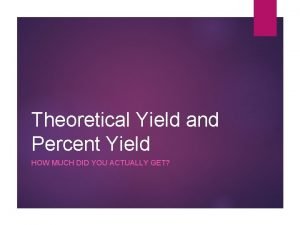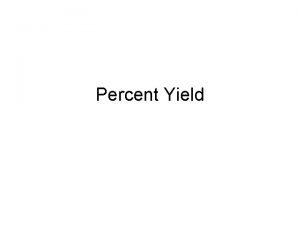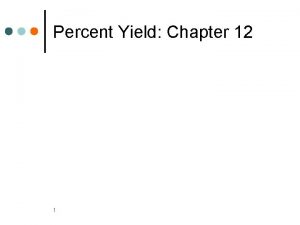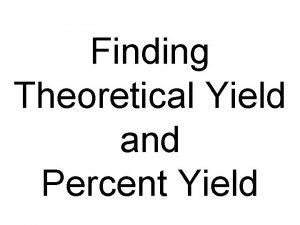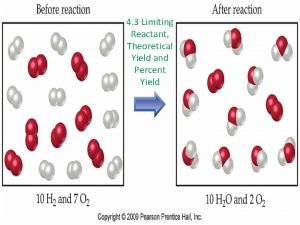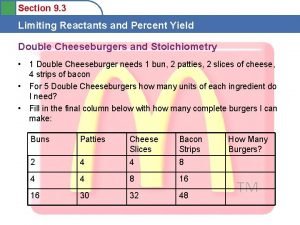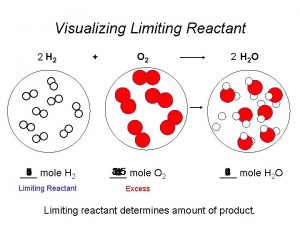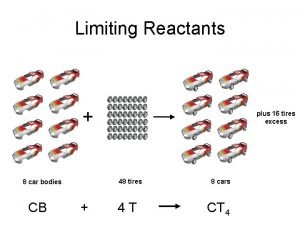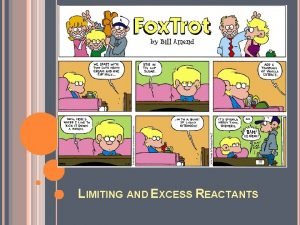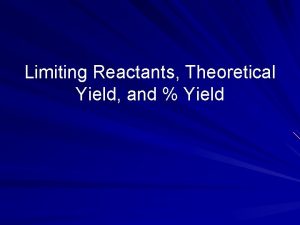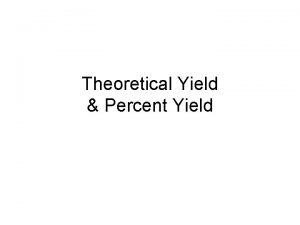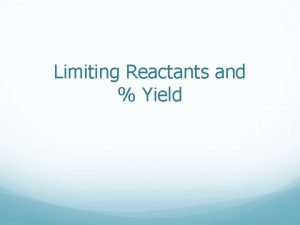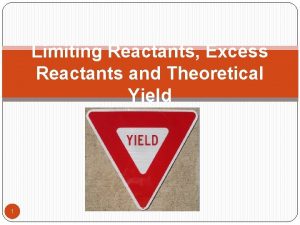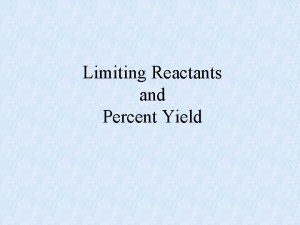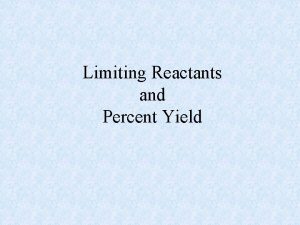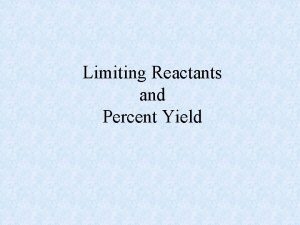LIMITING REACTANTS PERCENT YIELD ACTUAL AND THEORETICAL YIELD








- Slides: 8

LIMITING REACTANTS, PERCENT YIELD, ACTUAL AND THEORETICAL YIELD

LIMITING REACTANTS • The reactant that limits the amount of product that can form in a chemical reaction. • Excess reactant is not completely used in the reaction.

PRACTICE Silicon dioxide (quartz) is usually quite unreactive but reacts readily with hydrogen fluoride according to the following equation. Si. O 2(s) + 4 HF(g) → Si. F 4(g) + 2 H 2 O(l) If 6. 0 mol HF is added to 4. 5 mol Si. O 2, which is the limiting reactant?

SAMPLE PROBLEM F SOLUTION SIO 2(S) + 4 HF(G) → SIF 4(G) + 2 H 2 O(L) • Given: HF 6. 0 mol Si. O 2 4. 5 mol • Unknown: limiting reactant • Mol HF X mol Si. F 4/mol HF = mol Si. F 4 produced • Mol Sio 2 X mol Si. F 4/mol Si. O 2 = mol Si. F 4 produced • What is the limiting reactant? • HF

• Theoretical yield- the max amount of product produced from given amount of reactant. • Actual yield- product is measured amount of product obtained from reaction. • Percentage yield- ratio of actual yield to theoretical yield, multiplied by 100. • Percentage yield = actual yield/theoretical yield X 100

PERCENTAGE YIELD, CONTINUED Sample Problem Chlorobenzene, C 6 H 5 Cl, is used in the production of many important chemicals, such as aspirin, dyes, and disinfectants. One industrial method of preparing chlorobenzene is to react benzene, C 6 H 6, with chlorine, as represented by the following equation. C 6 H 6 (l) + Cl 2(g) → C 6 H 5 Cl(l) + HCl(g) When 36. 8 g C 6 H 6 react with an excess of Cl 2, the actual yield of C 6 H 5 Cl is 38. 8 g. What is the percentage yield of C 6 H 5 Cl?

PERCENTAGE YIELD, CONTINUED Sample Problem Solution C 6 H 6 (l) + Cl 2(g) → C 6 H 5 Cl(l) + HCl(g) Given: mass of C 6 H 6 = 36. 8 g mass of Cl 2 = excess actual yield of C 6 H 5 Cl = 38. 8 g Unknown: percentage yield of C 6 H 5 Cl Solution: Theoretical yield molar mass factor mol ratio molar mass

PERCENTAGE YIELD, CONTINUED Sample Problem H Solution, continued C 6 H 6(l) + Cl 2(g) → C 6 H 5 Cl(l) + HCl(g) Theoretical yield Percentage yield
